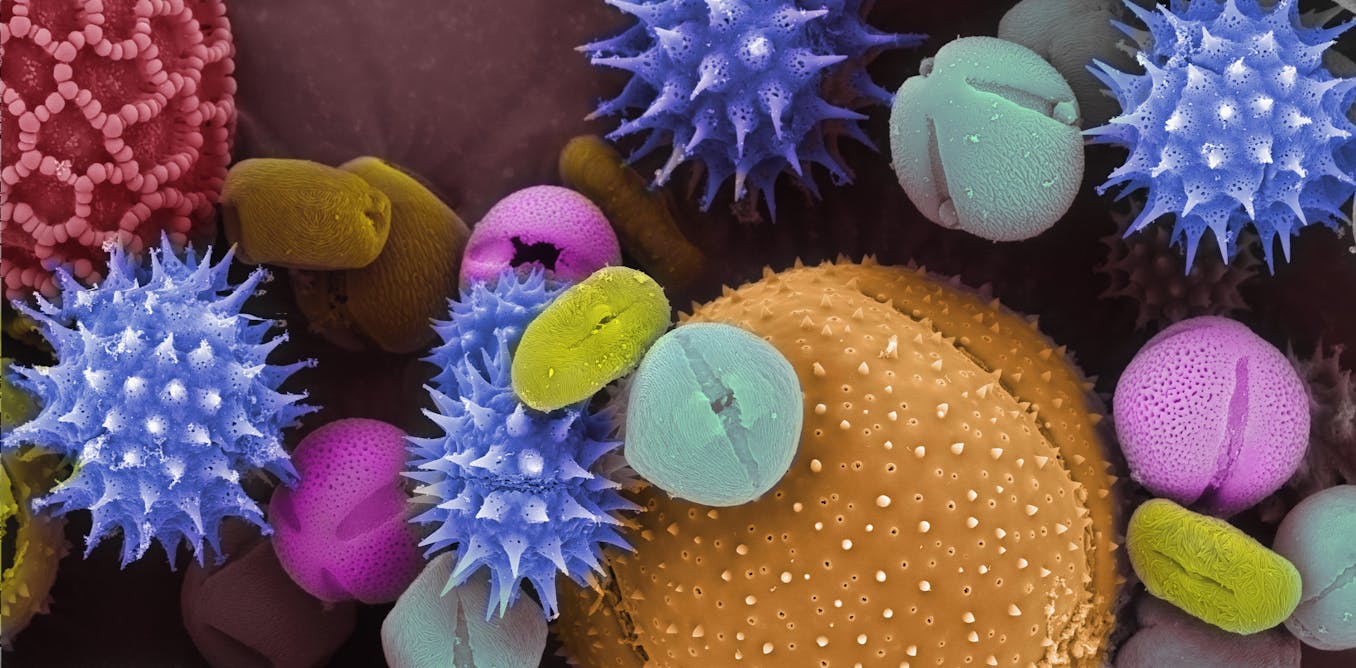Exposure to pollen may increase the risk of developing COVID-19, and it is not just a problem for people with allergies, shows new research released on March 9. Plant physiologist Lewis Ziska, co-author of the new peer-reviewed study and other recent research on pollen and climate change, explains the findings and why pollen seasons are getting longer and more intense.
What does pollen have to do with a virus?
The most important conclusion of our new study is that pollen may be a factor in the exacerbation of COVID-19.
A few years ago, my coauthors showed that pollen can suppress the way the human immune system responds to viruses. By interfering with proteins that signal antiviral responses in the cells lining the airways, it can make people more susceptible to a range of respiratory viruses, such as the flu virus and other SARS viruses.
In this study, we look specifically at COVID-19. We wanted to see how the number of new infections has changed with the rise and fall of pollen levels in 31 countries around the world. We found that, on average, about 44% of the variability in COVID-19 case rates was related to pollen exposure, often in synergy with humidity and temperature.
Infection rates tend to increase four days after a high pollen count. If there was no local block, the infection rate would increase by an average of about 4% per 100 grains of pollen in one cubic meter of air. A rigid lock reduced the increase in half.
This pollen exposure is not just a problem for people with hay fever. It is a reaction to pollen in general. Even the types of pollen that do not normally cause allergic reactions have been correlated with an increase in COVID-19 infections.
What precautions can people take?
On days with a high pollen count, try to stay at home to limit your exposure as much as possible.
When outdoors, wear a mask during the pollen season. The pollen grains are large enough that almost any mask designed for allergies will work to keep them out. However, if you are sneezing and coughing, use an effective mask against the coronavirus. If you are asymptomatic with COVID-19, all those sneezes increase your chances of spreading the virus. Mild cases of COVID-19 can also be mistaken for allergies.
Why is the pollen season lasting longer?
As the climate changes, we see three things that relate specifically to pollen.
One is an earlier start of the pollen season. Spring changes are starting earlier and there are global signs of pollen exposure early in the season.
Second, the general pollen season is getting longer. The time you are exposed to pollen, from spring, which is mainly driven by tree pollen, until summer, which consists of weeds and grasses, and then autumn, which is mainly ragweed, is about 20 days from more in North America than it was now in 1990. As you move towards the poles, where temperatures are rising faster, we find that the season is becoming even more pronounced.
Third, more pollen is being produced. Colleagues and I described the three changes in an article published in February.
As climate change increases pollen counts, this can result in greater human susceptibility to viruses.
[Get the best of The Conversation, every weekend. Sign up for our weekly newsletter.]
These changes in the pollen season have been going on for several decades. When my colleagues and I examined all the different pollen retention records that we have been able to locate since the 1970s, we found solid evidence to suggest that these changes have been happening for at least 30 to 40 years.
Concentrations of greenhouse gases are increasing and the Earth’s surface is heating up, and this will affect life as we know it. I have been studying climate change for 30 years. It is so endemic in today’s environment that it will be difficult to look at any medical problem without at least trying to understand whether climate change has already affected it or will do so.
